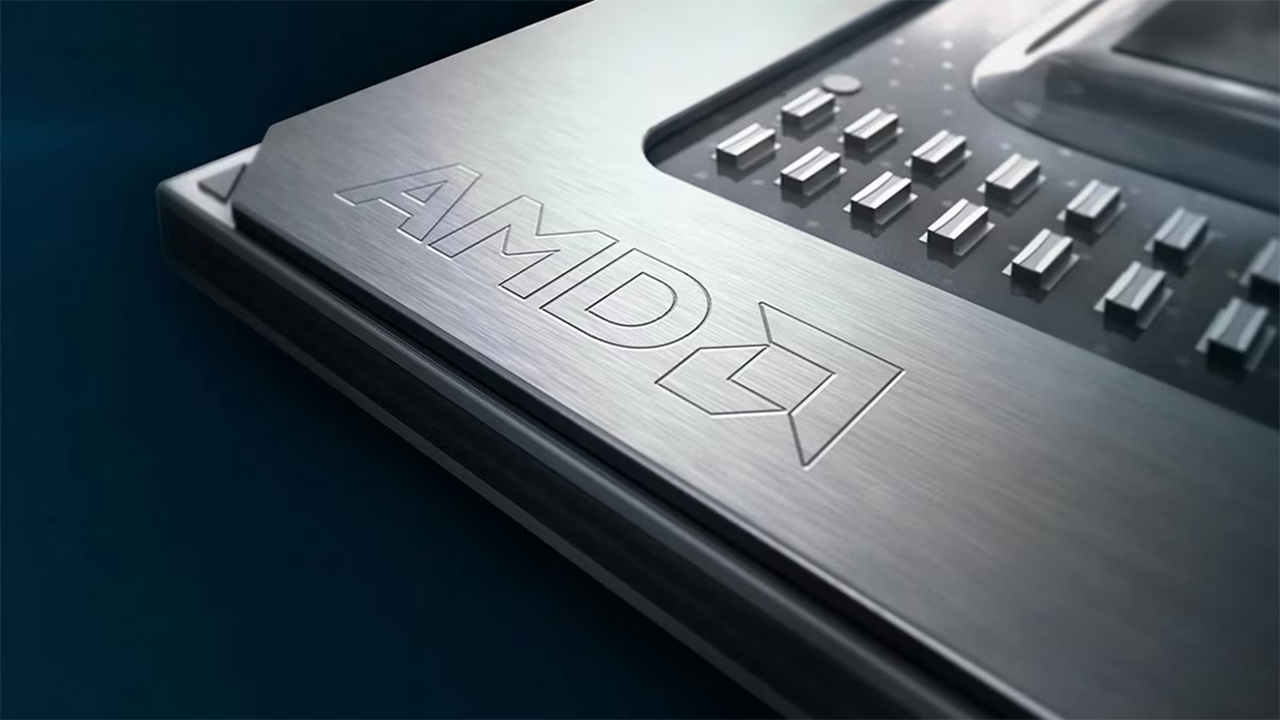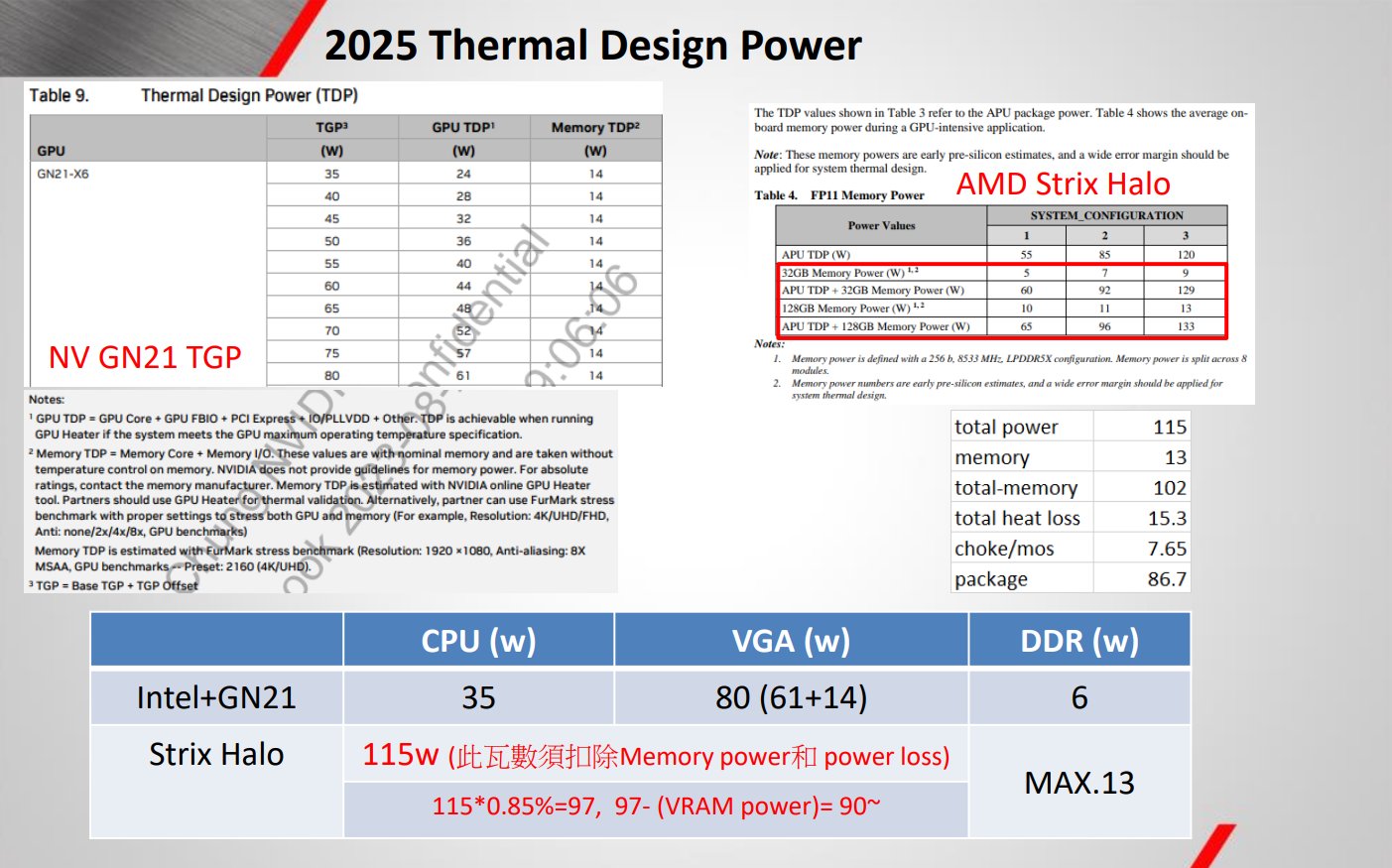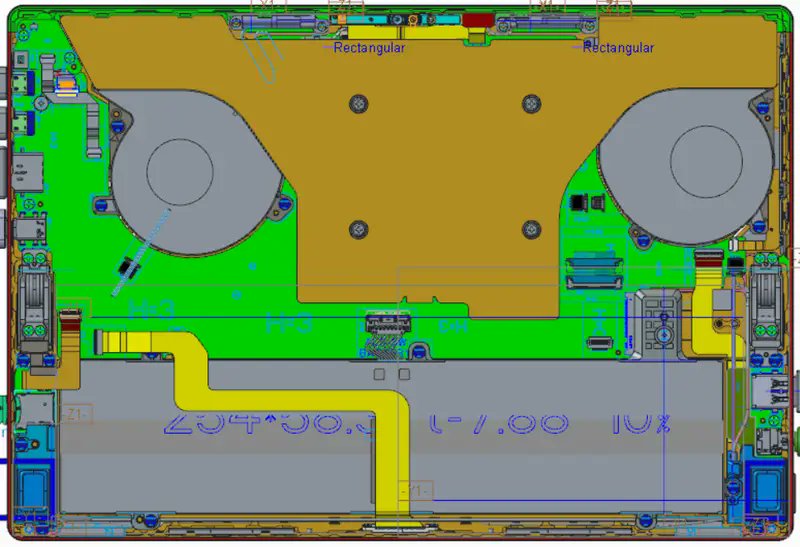AMD's next Zen 5 CPU could be a desktop-like 115W chip in a mobile form factor — Ryzen Strix Halo spotted with 16 cores and RDNA 3.5 iGPU

AMD still has to introduce its codenamed Strix Halo processor for ultra-high-performance laptops, but we occasionally get confirmations about this APU's monstrous specifications. This week, an unknown blogger posted excerpts allegedly from AMD documents revealing some extra details about AMD's upcoming processor.
The leaked excerpts claim that AMD's Strix Halo will reportedly come in an ultra-large package with a 256-bit LPDDR5X memory interface. One of the slides indicates that AMD's Strix Halo will come in a 37.5 mm × 45 mm package called FP11, precisely the size of an Intel processor in an LGA1700 form factor.
That package is said to house either a multi-chiplet processor featuring two eight-core Zen 5 core complex dies (CCDs) and a gigantic companion chiplet containing a high-end GPU, a memory controller with a 256-bit LPDDR5X-8533 PHY (up to 273 GB/s of peak bandwidth), and I/O capabilities; or an even a more gargantuan monolithic system-on-chip (SoC).
Based on the blueprint, the CCD could feature a die size of 66.34 mm², while the IOD+GPU could be 307.26 mm² large. If this is a monolithic SoC, which we doubt, it would have a die size of 460.9 mm².



Another slide indicates that AMD's Strix Halo in an FP11 package can consume up to 120W and, when equipped with 128GB of LPDDR5X memory, can reach 133W. Considering that we are talking about a processor with graphics capabilities akin to a mid-range discrete GPU, albeit with 273 GB/s of raw bandwidth, 133W does not seem excessive.
If the excerpts from Asus documents describing the company's upcoming ROG Flow X13 2025 gaming tablet are legitimate and accurate. Then, the company believes that a 133W monster could serve a gaming tablet well, provided the latter has a 'revolutionary and efficient thermal solution.' Meanwhile, the alleged Asus blueprints show that the company plans to install multiple LPDDR5X packages to take advantage of Strix Halo's 256-bit memory bus.
If the information about AMD's Ryzen 'Strix Halo' processor is correct, then the company might have a powerhouse at its hands. The company could not capture a sizeable share of gaming laptops for years with its Radeon discrete GPUs. Still, with a powerful APU and performance, power, and cost advantages that it promises to provide, AMD might turn the tables and recapture part of the market from Nvidia.
Get Tom's Hardware's best news and in-depth reviews, straight to your inbox.

Anton Shilov is a contributing writer at Tom’s Hardware. Over the past couple of decades, he has covered everything from CPUs and GPUs to supercomputers and from modern process technologies and latest fab tools to high-tech industry trends.
-
-Fran- Yes, AMD. Yes!Reply
Unleash the... *checks name* ...Strix Halo!
I know there's a Kraken, but dang it. This should've been the Kraken.
Regards. -
kealii123 The Asus Gaming tablet is the Z13, not the X13. The X13 is their 13" clamshell.Reply
Also, can we get a link to the rumored new X13/Z13? -
A Stoner Sounds compelling for those who have to have a gaming laptop. But I am pretty certain I will never pay for another gaming laptop in my lifetime. The two purchases I made were worthless within a year both times. They just simply do not have enough power to keep up with future releases.Reply -
usertests ReplyOne of the slides indicates that AMD's Strix Halo will come in a 37.5 mm \00d7 45 mm package called FP11, precisely the size of an Intel processor in an LGA1700 form factor.
Perhaps this should be the size of AM6 (with quad-channel memory support, of course). -
zsydeepsky would say another interesting part might be that 256bit memory bus, somewhere else on the internet I saw a leaked spec images says it has 500G/s bandwidth, which made me wonder if it also supports 4-channel RAM.Reply
if so, besides the benefit to the iGPU, it could also make Strix Halo a cheap alternative for Threadripper platform if you need to run some memory-heavy tasks. -
jtuck9 Reply
If I were to get something that has this chip in it I'd probably use it for running relatively modest / obscure games locally and relying on something like Geforce Now for anything more demanding going forward. Have to see if they pair it with an OLED on something like a Zephyrus or what sort of outputs will be supported on Mini-Pc's etc...A Stoner said:Sounds compelling for those who have to have a gaming laptop. But I am pretty certain I will never pay for another gaming laptop in my lifetime. The two purchases I made were worthless within a year both times. They just simply do not have enough power to keep up with future releases. -
usertests Reply
Yes, 256-bit (quad-channel) is old news. Although some cheaper variants might only support 128-bit.zsydeepsky said:would say another interesting part might be that 256bit memory bus, somewhere else on the internet I saw a leaked spec images says it has 500G/s bandwidth, which made me wonder if it also supports 4-channel RAM.
if so, besides the benefit to the iGPU, it could also make Strix Halo a cheap alternative for Threadripper platform if you need to run some memory-heavy tasks.
As a budget Threadripper alternative, it could be interesting. With DIMMs/CAMMs, at least 192-256 GB ought to be possible, if not more. Getting proper ECC support could be harder, depends on the motherboard, right? -
zsydeepsky Reply
I thought DDR5 standards already included some ECC features, though not as good as REG ECC that are used on servers, but should be as good as regular workstations.usertests said:Getting proper ECC support could be harder, depends on the motherboard, right?
so...a mobile workstation :unsure: -
usertests Reply
DDR5 includes an internal ECC that shouldn't be compared to real ECC support, which is still optional and probably requires another chip on modules.zsydeepsky said:I thought DDR5 standards already included some ECC features, though not as good as REG ECC that are used on servers, but should be as good as regular workstations.
so...a mobile workstation :unsure:
https://en.wikipedia.org/wiki/DDR5_SDRAM#FeaturesUnlike DDR4, all DDR5 chips have on-die error-correction code, that detects and corrects errors before sending data to the CPU, to improve reliability and allow denser RAM chips which lowers per-chip defect rate. However, on-die error-correction code is not the same as true ECC memory with extra data correction chips on the memory module. There still exists non-ECC and ECC DDR5 DIMM variants; ECC variants have extra data lines to the CPU to send error-detection data, letting the CPU detect and correct errors occurring in transit.
I don't even know what the story is with LPDDR5(X) or (LP)CAMM. -
sdedalus83 Reply
LPDDR5 can be configured for 16 or 32 bit channels. AMD is probably using a 32 bit configuration with 8 channels. The 500GB/s figure is probably “effective” bandwidth in conjunction with the 32MB cache.zsydeepsky said:would say another interesting part might be that 256bit memory bus, somewhere else on the internet I saw a leaked spec images says it has 500G/s bandwidth, which made me wonder if it also supports 4-channel RAM.
if so, besides the benefit to the iGPU, it could also make Strix Halo a cheap alternative for Threadripper platform if you need to run some memory-heavy tasks.